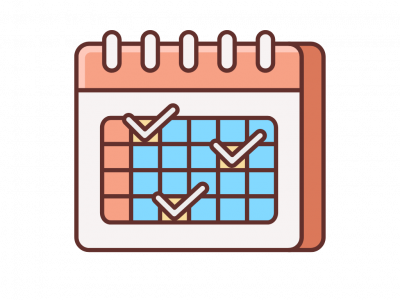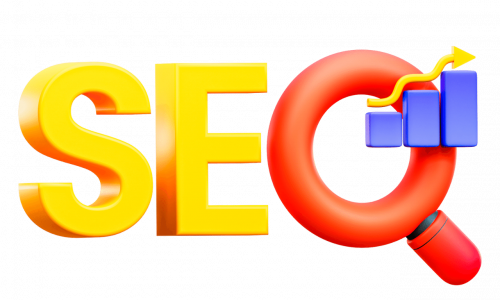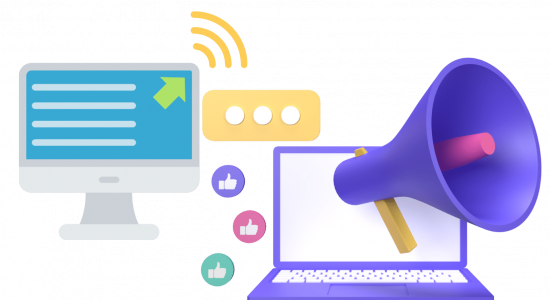In this post, we will show you How to make a content plan for a website.
Are you tired of feeling overwhelmed with the endless task of creating a consistent stream of quality content for your website? Look no further, as we have the perfect solution for you.
Say goodbye to scattered ideas and hello to a structured approach to content creation. Join us as we uncover the secrets to crafting the perfect website content plan.
A content plan is vital for website success. It provides structure, direction, and purpose to online presence, helping to achieve goals such as building brand awareness, driving traffic, generating leads, or selling products.
Additionally, creating a content plan is a critical component in ensuring the success of your website, whether you’re starting from scratch or seeking to improve your current online presence.
Table of Contents
How to write a website content plan?

Identifying your target audience
A critical aspect of a content plan is identifying your target audience. This involves understanding who your ideal customer is, understanding their needs, interests, and pain points, and how they consume information.
By defining your target audience, you can create content that resonates with them, effectively addresses their needs, and builds trust and loyalty.
Having a clear understanding of your target audience helps you make informed decisions about the tone, style, and format of your content, ensuring that it speaks directly to them and drives the results you want.
Identifying what you want to achieve through your website

When creating a website, it’s also important to identify what you want to achieve through it. This will help you set specific and measurable goals for your website and guide your content creation and distribution efforts.
This can range from building brand awareness, driving traffic, generating leads, selling products, and more. another key point Knowing what you want to achieve will help you make informed decisions about the types of content and features you include on your website and how you promote it to your target audience.
(Align your content plan with your goals and objectives)
Defining your goals will also help you measure the success of your website and make any necessary adjustments to improve your online presence. after all, you need to know where you stand.
Create a content calendar and try to stick to plan

A content calendar is a crucial part of a content plan, as it helps you schedule, organize, and plan your content creation and publishing efforts. With a content calendar, you can make sure that your website always has fresh, relevant content to engage your target audience, achieve your goals, and drive results.
The content calendar allows you to map out your content ideas, schedule them for publication, and track their performance over time.
This helps you to consistently publish content that aligns with your goals and target audience, making it easier to measure the success of your content marketing efforts.
Identifying the types of content you want to Create

First When creating a content plan for your website, it is important to identify the types of content you want to create. This includes the format, such as blog posts, videos, infographics, or social media updates, as well as the subject matter and tone of your content.
finally, by understanding what types of content you want to create, you can ensure that your content is consistent with your overall goals and resonates with your target audience. This helps to build your brand and keep your audience engaged and coming back for more.
Deciding on the frequency of publishing new content (How to make a content plan for a website)

Deciding how often to publish new content is an important part of creating a content plan for your website.
By creating a content schedule and determining the frequency of publishing, you can take a crucial step toward the success of your website.
You may choose to publish new content on a daily, weekly, or monthly basis, or you may opt for a more irregular schedule. Factors such as your audience, goals, and resources will help you determine the right frequency for your website.
Finally, it’s important to be consistent in your publishing schedule and stick to it, as this helps build trust and engagement with your audience.
Website content planning
Brainstorming and creating ideas for content

Brainstorming content ideas involves generating and collecting a wide range of ideas and concepts that can be used to create high-quality, engaging content for your website.
This process is essential for ensuring that you have a constant supply of fresh, relevant ideas to keep your audience engaged and coming back for more. Some popular brainstorming techniques include:
- Mind mapping: Draw a central idea and create branches to show related ideas.
- Word association: Write down a word related to your topic and keep listing associated words.
- Group brainstorming: Gather a group of people to generate ideas together.
- Freewriting: Write down anything and everything that comes to mind without stopping or editing.
The goal of brainstorming is to generate a large number of ideas, even if some of them are not immediately useful. Subsequently, you can take these ideas and narrow them down to the most relevant and impactful ones.
the best ideas and develop them into well-crafted content that resonates with your target audience.
Researching current trends, topics, and industry news

Researching current trends, topics, and industry news is an important step in creating a content plan for your website. By staying up to date with the latest industry news, you can create content that is relevant, engaging, and valuable to your target audience.
You can use a variety of tools and resources to research current trends, including industry blogs and websites, social media, and keyword research tools.
It’s important to be creative and think outside the box when researching, as this can help you come up with
unique and innovative content ideas that set your website apart from others in your industry.
By incorporating current trends, topics, and news into your content plan, you can ensure that your website stays relevant, engaging, and valuable to your target audience.
How to make a content plan for a website (List and ideas)

A list of potential blog post ideas can be created through research on current trends, topics, and industry news, as well as brainstorming sessions with your team or target audience. Some other ways to generate ideas include:
- Answering frequently asked questions by your target audience
- Sharing personal stories or experiences related to your industry
- Highlighting success stories from customers or clients
- Sharing tips and tricks in your area of expertise
- Providing behind-the-scenes looks at your business operations
- Reviewing products or services in your industry
- Sharing infographics or other visually appealing content
- Providing case studies or data-driven research
- Interviewing experts in your field
- Hosting Q&A sessions or surveys for your target audience.
Tips for writing high-quality, engaging, and SEO-friendly content

- Know your target audience: Before writing your content, understand who you want to reach. Consider their interests, needs, and what they expect from your website.
- Choose relevant, keyword-rich topics: Select topics that align with your target audience’s interests and the goals of your website. Also, include keywords relevant to your business that users might use to find your site in search results.
- Write with clarity and brevity: Be clear, concise, and easy to understand in your writing. Avoid long paragraphs, use headings and subheadings, and aim for an engaging, conversational tone.
- Use visual aids: Add images, videos, and infographics to break up the text and make your content more engaging. They also help to convey your message effectively.
- Make it shareable: Encourage your audience to share your content by adding social sharing buttons to your site. Also, create content that is easily shareable and provides value to others.
- Optimize for search engines: Use keywords throughout your content, including in the headline, meta description, and alt tags for images. Also, make sure your site is easy to navigate and has a user-friendly URL structure.
- Focus on quality: High-quality content is engaging, valuable, and useful to your audience. Focus on providing relevant, up-to-date information and delivering it in a way that is easy to understand.
By following these tips, you can create high-quality, engaging, and SEO-friendly content that your target audience will love.
Making a content plan for a website with,
Using images, videos, and other multimedia elements to enhance your content

- Incorporating multimedia elements such as images, videos, and infographics into your content can greatly enhance the user experience and make your content more visually appealing.
- Using relevant images and videos can help break up long blocks of text, making your content easier to read and understand.
- Additionally, multimedia elements can help illustrate complex concepts, making your content more memorable and engaging.
- When selecting multimedia elements, it’s important to make sure they are high-quality and relevant to your content and to properly optimize them for SEO, such as using descriptive alt tags and file names.
Publishing and promoting your content to drive traffic

To drive traffic and engagement to your website, it’s essential to publish and promote your content effectively. There are various methods
- you can use to get your content in front of your target audience, including:
- Sharing your content on social media platforms, such as Facebook, Twitter, and LinkedIn
- Guest posting on other relevant websites and blogs to reach a new audience.
- Utilizing email marketing to notify subscribers about new content.
- Using paid advertising, such as Google AdWords, to drive targeted traffic to your website.
- Optimizing your content for search engines by incorporating keywords and meta descriptions.
- Collaborating with influencers or other websites in your industry to promote your content.
By effectively promoting your content, you can increase visibility, generate more traffic, and ultimately achieve your website goals.
Measuring and evaluating your content's performance

To measure and evaluate the performance of your content, you should regularly review key metrics such as website traffic, engagement rates (likes, comments, shares), conversion rates, and search engine rankings.
This information can help you identify what’s working and what’s not and make adjustments to your content plan as needed to optimize results.
You can also use tools such as Google Analytics and Google Search Console to track and analyze your website’s performance and gain insights into your audience’s behavior and preferences.
By regularly monitoring and evaluating your content’s performance, you can ensure that your efforts are aligned with your goals and making the impact you want.
Tracking metrics and analyzing the data are crucial steps in evaluating the performance of your content. Metrics such as page views, engagement, and conversion rates can give you valuable insights into what your target audience is responding to and what’s working best for your website.
By analyzing this data, you can determine what’s working and what’s not, and use these insights to inform future content planning and creation. This will help you to make data-driven decisions, refine your content strategy, and continuously improve your website’s performance.
Conclusion

In conclusion, having a content plan for your website is crucial for success. A well-structured plan provides direction, purpose, and helps you effectively communicate your message and achieve your goals.
In this blog post, we covered the key steps to creating a content plan, including identifying your target audience and goals, creating a content calendar, brainstorming ideas, researching trends, writing high-quality content, and promoting it.
Additionally, we discussed the importance of tracking metrics and using the data to inform future content planning. By following these tips and techniques, you’ll be well on your way to creating a successful and thriving online presence.






